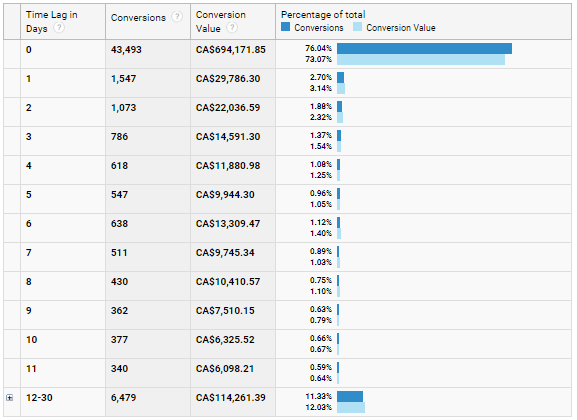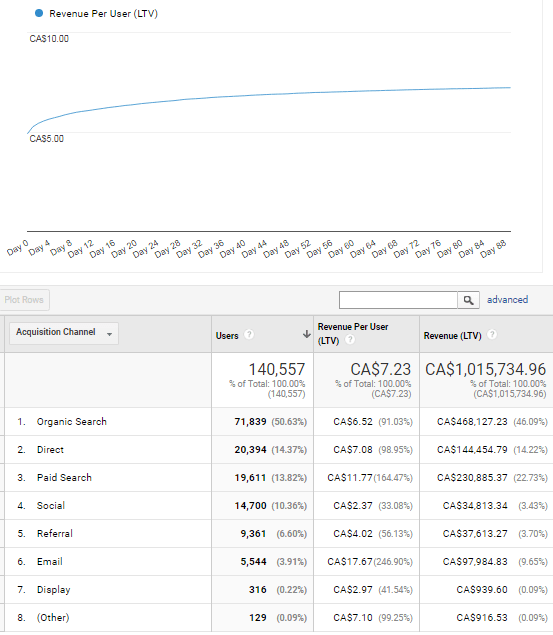So, your business has a fully-functioning website and live marketing campaigns. You probably go inside of your website’s dashboards and Google Analytics account to draw insights about your revenue, ROI, and traffic. Little do you know, there are hundreds of possible reports your business can use to learn more about your performance and audience. Here are 7 of our favorites:
1: Path to Purchase Reports
Chances are that most people who end up becoming one of your customers have to visit your website more than once before opening their wallet. This means that it’s not just important to see which traffic sources drive sales and leads, but also which traffic sources influence the purchase-making decision earlier in the process. You’ll likely find that sources such as paid advertising, social network referrals and email campaigns are the first touchpoint for customers who later convert through a direct or organic visit from the search results.
Recommendation: Top Conversion Paths Report

2: Time to Purchase Reports
Now that your business knows how many times and in what order users visit your website before becoming a customer, it is also crucial to understand how much time is needed before the first visit to your website and the purchase decision. After all, a business where users instantly become customers vs. those with a year-long decision-making process will require substantially different marketing decisions.
Recommendation: Time Lag Report

3: Customer Lifetime Value Reports
Are all customers worth the same? Absolutely not. Is traffic acquired through organic search results, paid advertising, display campaigns or referral traffic more valuable for your business? Understanding not just the conversion rates, but the lifetime value of customers should be essential in your decision of where to invest your digital marketing dollars.
Recommendation: Customer Lifetime Value Report (Beta)

4: Attribution Modelling
Most digital analytics and advertising platforms work off of a “last-click” model, where goal completions are attributed to the last source that drove a customer to your website before the conversion. But, as you could see in conversion path report, many channels contribute to the ultimate decision to become a customer. How can we visualize and give credit to these influencing sources? Attribution modelling.
Recommendation: The Model Comparison Tool

5: Funnel Visualization
Are you an eCommerce business or educational institute? Understanding and finding issues with your checkout cart or program application process is likely the top game-changing piece of data your team can acquire. If nearly all customers who you lose during the checkout process are lost on one page, then you know exactly where you need to be making adjustments to your website.
Recommendation: Funnel Visualization Report

6: Schedule Performance Reports
How is your website performance in terms of day of the week and time of the day? Your business should have a thorough understanding of how these factors affect your traffic, goal completions and website engagement levels. If you have limited ad spend, deciding the exact times of the week to drive traffic to the website can greatly improve campaign ROI.
Recommendation: Custom Day of Week & Hour of Day Reports

7: Audience Performance Reports
Are you utilizing remarketing lists in your digital advertising? Creating segmented groups based on user information is a great idea. But, how much better is your “Previous Purchasers” audience than your “All Website Visitors” list? By using the new audience feature in Google Analytics, you will be able to see just that.
Recommendation: Audience Reports (New Release)

Next Steps
Are you already using all of the above reports? If not, it’s time to shake up the way that your business uses data.
Looking to learn more? Contact us today for a Digital Assessment to help you form an online strategy built for success!



